Engineering Mathematics - Online Test
Q1. The weight of a sequence a0, a1,…,an-1 of real numbers is defined as a0 + a1/2 + ..... + an-1/2n-1. A subsequence of a sequence is obtained by deleting
some elements from the sequence, keeping the order of the remaining elements
the same. Let X denote the maximum possible weight of a subsequence of
a0, a1,..., an-1. Then X is equal to
Answer : Option D
Explaination / Solution:
No Explaination.
Q2. Consider a complete undirected graph with vertex set {0, 1, 2, 3, 4}. Entry Wij in
the matrix W below is the weight of the edge {i, j}.
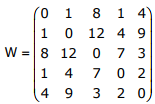

What is the minimum possible weight of a spanning tree T in this graph such that
vertex 0 is a leaf node in the tree T?
Answer : Option D
Explaination / Solution:
No Explaination.
Q3. Consider a complete undirected graph with vertex set {0, 1, 2, 3, 4}. Entry Wij in
the matrix W below is the weight of the edge {i, j}.
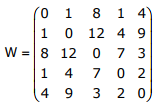

What is the minimum possible weight of a path P from vertex 1 to vertex 2 in this
graph such that P contains at most 3 edges?
Answer : Option D
Explaination / Solution:
No Explaination.
Q4. The number of parameters in the univariate exponential and Gaussian distributions,
respectively, are
Answer : Option B
Explaination / Solution:
Probability density functions of univariable exponential distributes
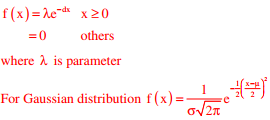

where µ and σ are parameters
Q5. The reaction rate involving reactants A and B is given by  Which one of the
following statements is valid for the reaction to be first –order reaction?
Which one of the
following statements is valid for the reaction to be first –order reaction?
 Which one of the
following statements is valid for the reaction to be first –order reaction?
Which one of the
following statements is valid for the reaction to be first –order reaction?
Answer : Option B
Explaination / Solution:
In chemical kinetics, the order of reaction with respect to given substance is defined as the
index or exponent to which its concentration term in the rate equation is raised.

Order of reaction = α + β
For first order reaction, α + β = 1
Q6. The matrix P is the inverse of a matrix Q. If I denotes the identity matrix, which one of the
following options is correct?
Answer : Option C
Explaination / Solution:
Given P is inverse of Q
⇒ PQ = QP = I
Q7. Let x be a continuous variable defined over the interval (−∞, ∞), and 

Answer : Option B
Explaination / Solution:
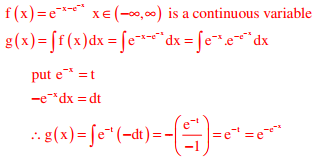

Q8. For the function f(x) = a + bx, 0 ≤ x ≤ 1, to be a valid probability density function, which one of the following statements is correct?
Answer : Option B
Explaination / Solution:
f(x) = a + bx 0 ≤ x ≤1 iis a valid probability density function
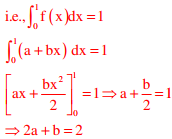

a=0.5, b=1 satisfies the above relation
Q9. Consider the matrix  Which one of the following statements is TRUE for the
eigenvalues and eigenvectors of this matrix?
Which one of the following statements is TRUE for the
eigenvalues and eigenvectors of this matrix?
 Which one of the following statements is TRUE for the
eigenvalues and eigenvectors of this matrix?
Which one of the following statements is TRUE for the
eigenvalues and eigenvectors of this matrix?
Answer : Option A
Explaination / Solution:
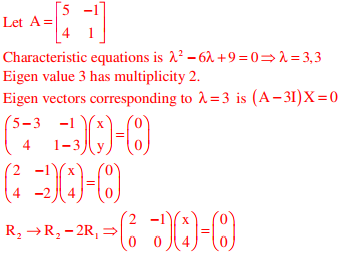

e(A) = 1
Number of linearly independent eigen vectors corresponding to eigen value λ = 3 is
n-r=2-1=1 where n= no. of unknowns, r= rank of( A − λI)
One linearly independent eigen vector exists corresponding to λ = 3
Q10. The solution of the equation (dQ/dt) + Q = 1 with Q = 0 at t = 0 is
Answer : Option D
Explaination / Solution:
(dQ/dt) + Q = 1 and Q = 0 at t = 0
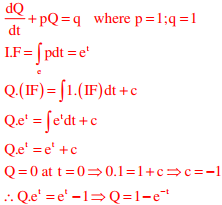
Comparing with first order linear differential equations

